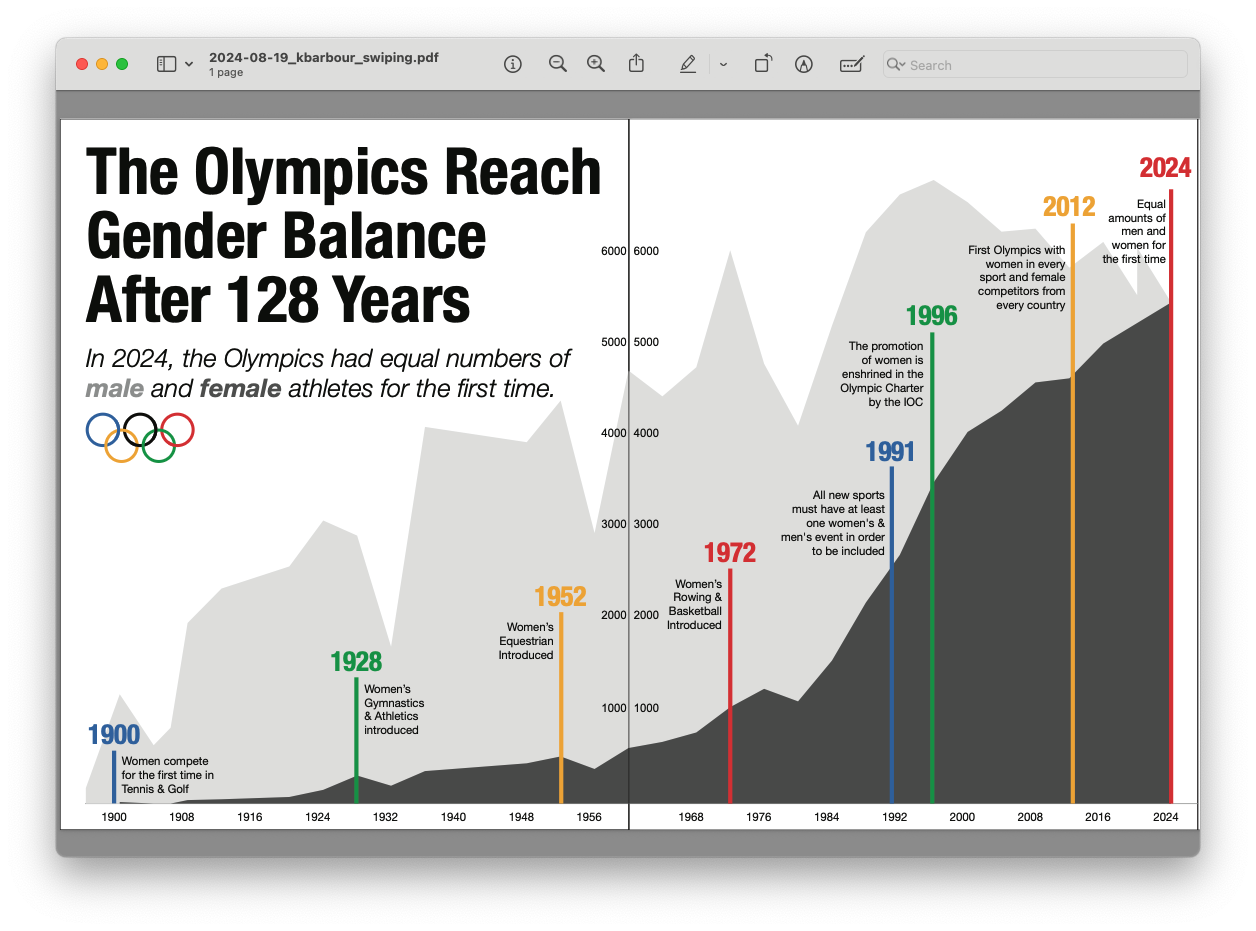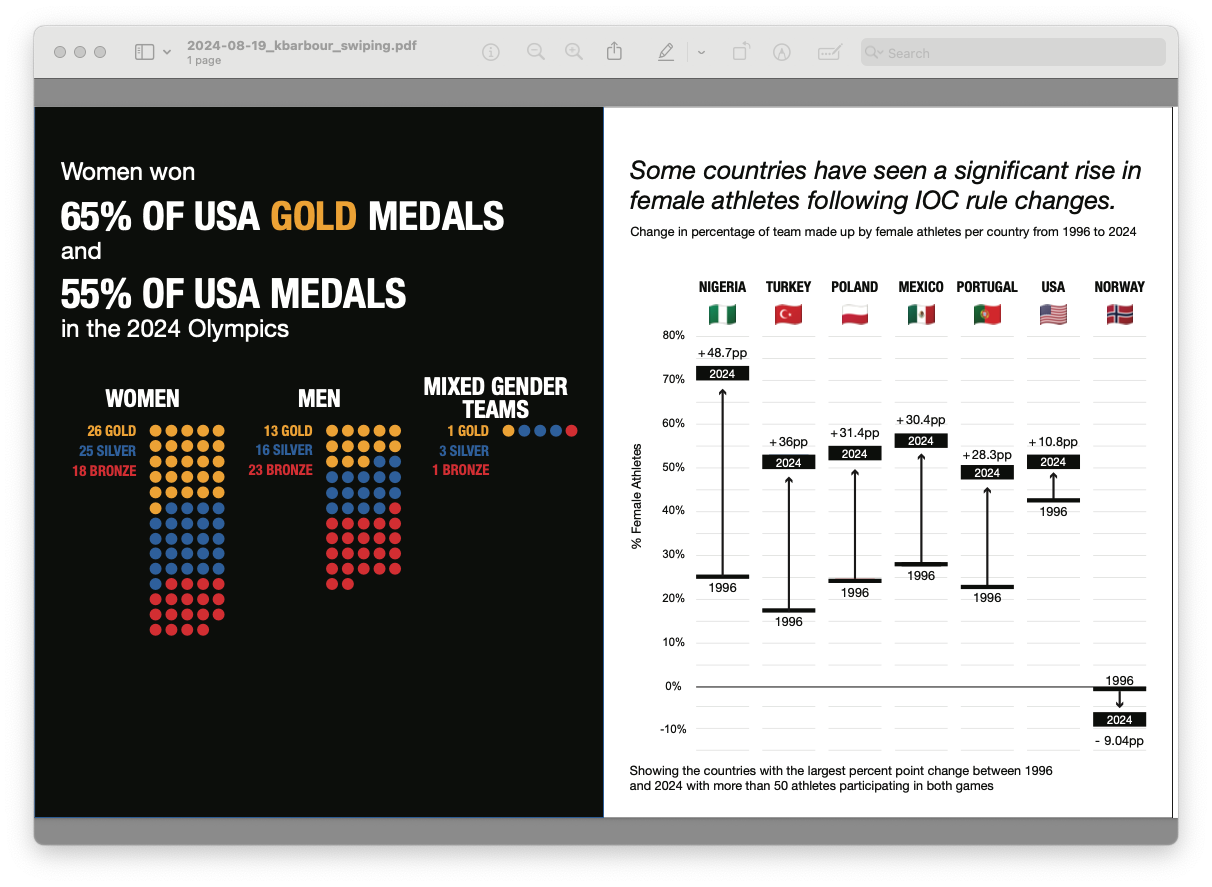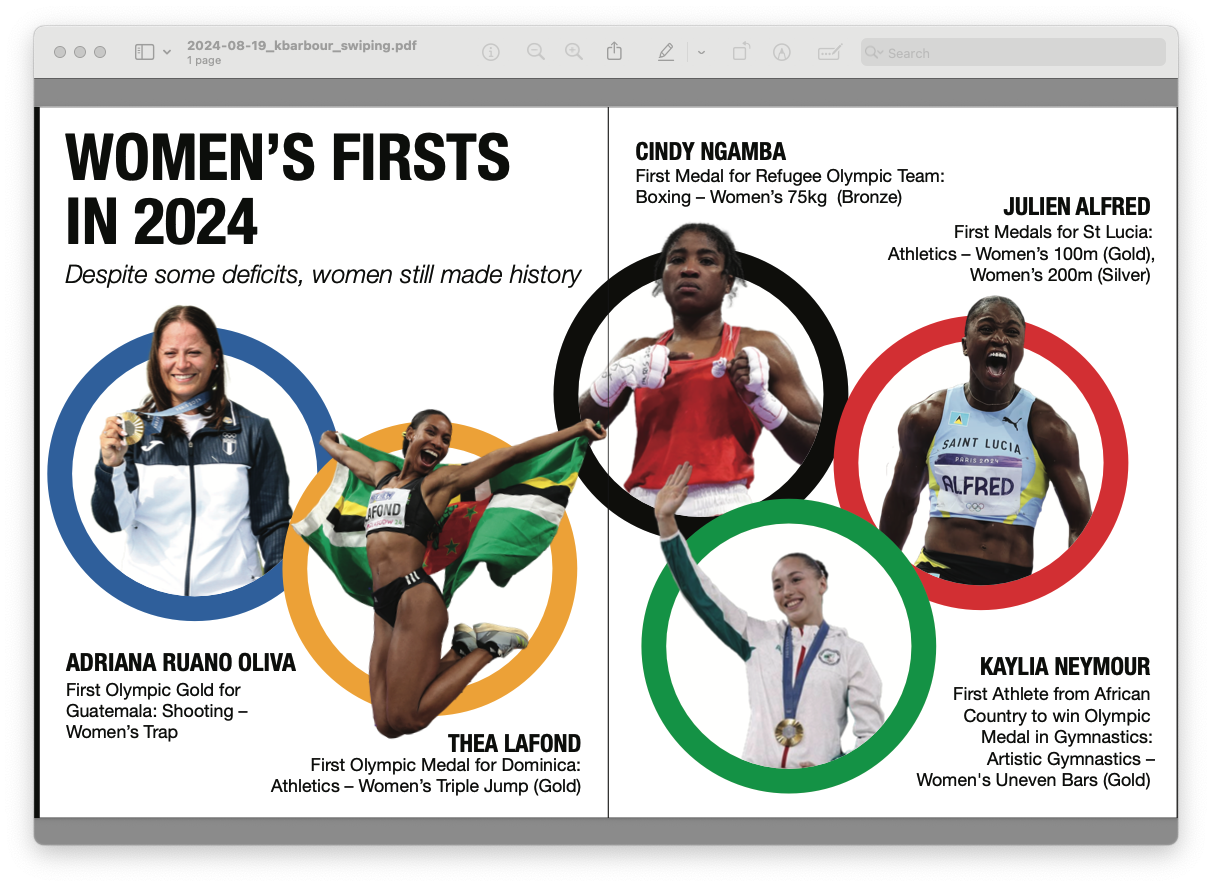
Women in the Olympics
The Long Climb to Gender Balance in the Olympics
Visualization of the growing presence of women in the Olympics, highlighting milestones and gender parity at the 2024 Games.
Project Overview
This project uses historical and 2024 Olympic data to visualize the rise of women in Olympic competition. Designed as an Instagram-style swipe carousel, the piece highlights how female participation has increased over time, where the biggest shifts have happened, and how U.S. women showed up in 2024 — both in numbers and in medal counts.
The Problem
Despite progress, women’s presence in the Olympics has been slow to catch up. The 2024 Games were the first to reach full gender parity in athlete numbers — but not all countries reflect that balance. This project asks: How far have we come, and where are the gaps still visible?

Audience & Approach
The piece is aimed at a general U.S. audience who follows visually driven news content (like NYT or WaPo social posts). The design borrows heavily from 2024 Olympic branding, with a limited color palette inspired by the Olympic rings. The charts focus on clarity and contrast, using simple elements and direct labeling to communicate at a glance.
Data visualizations included:
- Growth in women’s participation from 1900 to 2024
- % of 2024 medals won by U.S. women
- Countries with the largest increases in female representation
- A callout on nations still lagging in gender balance

Reflection
This was a fast project, and I prioritized legibility, consistency, and smart use of basic design principles (pattern, closure, emphasis). I iterated on the medal graphic to avoid misleading impressions and focused on universal design considerations like color contrast and direct labeling.
If extended, I’d continue refining the final slides for visual consistency and explore additional ways to show how women’s presence in Olympic rankings has evolved beyond just medal counts.